Hill Country Conservancy and the Nalle family jointly manage the Nalle Bunny Run, a 40 acre wildlife preserve in west Austin. I've been a longtime volunteer there and every year the Nalles ask for my 10 favorite photos of the year to include in their annual report. This year was especially challenging for me, losing my mother in February and my father in September. I spent a lot of time in Port Aransas helping them, and then dealing with the estate. But during my few trips to Austin I was able to visit the Bunny Run which always helped my state of mind. So this year I decided to share my top 10 photos here since they represent a few bright points in a dark year.
Golden-crowned Kinglet on Jan 3
The similar Golden-crowned Kinglets and Ruby-crowned Kinglets are winter residents in central Texas with Ruby-crowned's being much more common. Some winters we hardly see any Golden-crowns. But I can usually find a couple on the Bunny Run, and I was even able to photo one of these very active little birds there in early January. I hear that Golden-crowned's are significantly more common in the Austin area this winter so far!
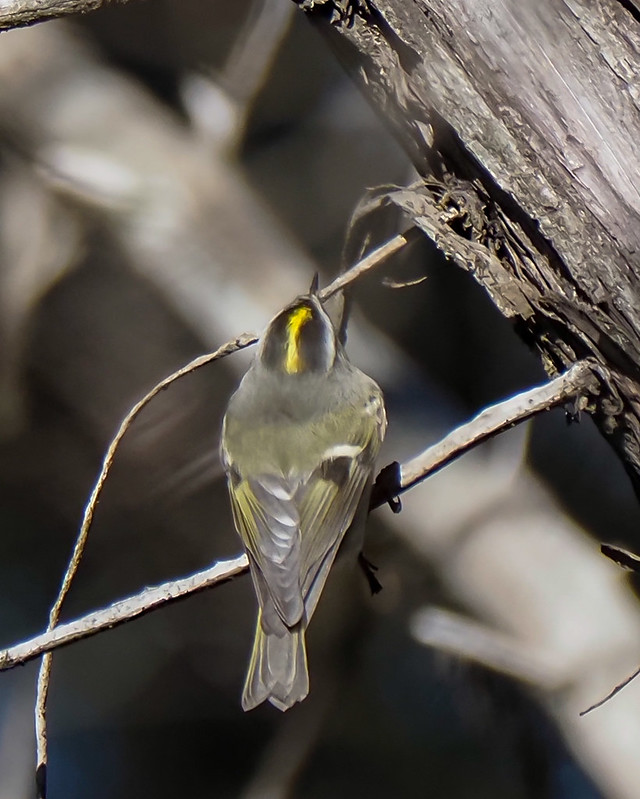
Yellow-rumped Warbler on Jan 9
The following weekend I met up with HCC staff Carolyn Stephens and Sarah Dean to make a nature walk video. (We had been making these videos in lieu of hosting in-person walks since the pandemic started.) The next three photos were taken during that walk, and you can watch the video here. It was a very cold morning, starting out just below freezing. This Yellow-rumped Warbler responded to my pishing and you can see how puffed out its feathers are to keep warm. There's just a hint of yellow on its shoulder.

Egyptian Goose on Jan 9
We had two exciting flyovers on the same cold morning. The first was this Egyptian Goose, a relative newcomer to central Texas. This exotic species seems to have an established small population around Lake Austin, mostly likely started from escaped captive birds. You can see from their striking appearance why it's a common species to own.

Common Raven on Jan 9
The second flyover was a pair of Common Ravens, croaking to each other as they flew. Many people don't realize there are a few ravens in Austin, mostly west of Mopac. They can be told from crows by their lower voice, longer rounded tails, and their huge size which made an impression on us as they passed by right over our heads.
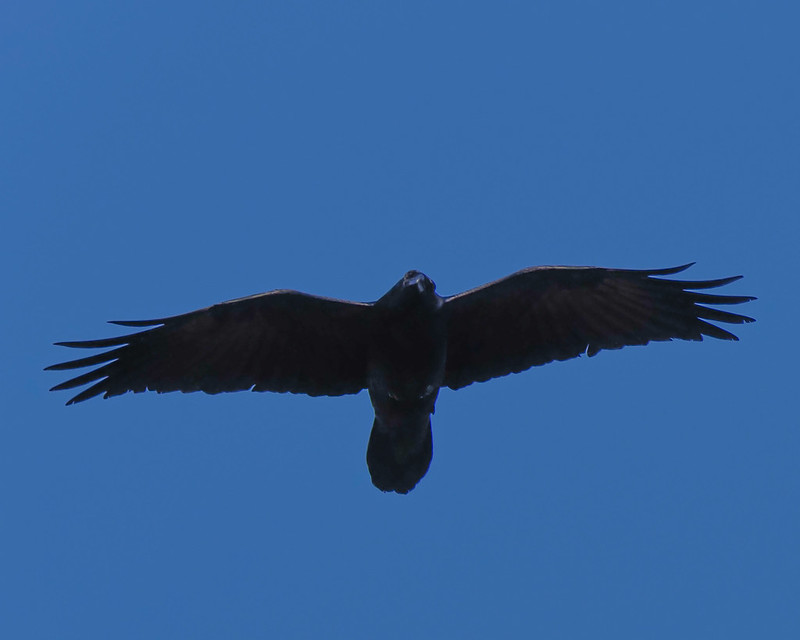
Travertine Pools on Feb 6
In early February, just a few weeks before the historic winter storm and my mom's passing, I finally photographed some limestone pools in a beautiful sometimes-waterfall area. I'd been wondering about these pools because I remembered similar pools on a conserved section of upper Bull Creek. They were pointed out during a guided hike there as being very sensitive and formed from dissolved limestone in the water. They were described as "travertine" pools. A few months ago I started to wonder if these were the same kinds of pools. I sent this photo to Zach Stark, the director of Environmental Stewardship for Concordia University which owns the preserved area of Bull Creek. (Zach led the hike that day.) He agreed these were the same kind of pool. Another discovery on the Bunny Run!

Northern Cardinal on Feb 6
Just downstream from the travertine pools on the same morning, this female Northern Cardinal took a few drinks.
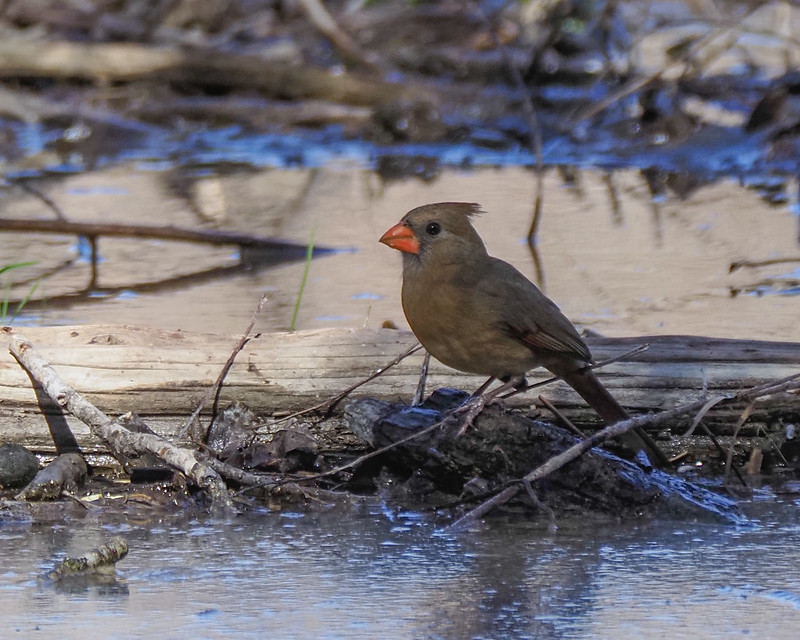
Little Wood Satyr on April 10
Little Wood Satyr is one of the brush-footed butterflies that lives in shady wooded areas of central Texas. Its colors blend in with the dead leaves and branches of the forest floor and understory. I was excited that this photo showed some silvery spots on its wings!
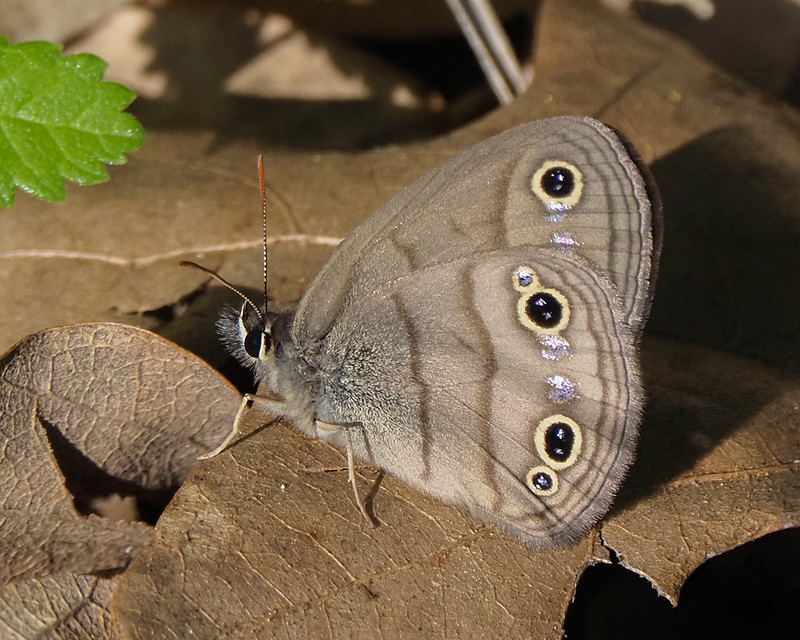
Green Dragon on April 10
2021 was a great year for learning about plants on the Bunny Run. Texas botanist Bill Carr made several visits and on March 20 he found a patch of Green Dragon near a limestone outcropping on the shaded western edge of the preserve which slopes towards the lake. We found two more patches of this uncommon central Texas plant when Bill returned on April 10. Green Dragon is more of an eastern species. Here, it is a rare remnant from when central Texas was a wetter place. This photo shows its unique asymmetrical leaf whorls. It also happens to be the first species account in the venerable central Texas field guide, "Wildflowers of the Texas Hill Country" by Marshall Enquist.

Southern Spreadwing on Oct 16
On October 16 I spent a beautiful cool fall morning on the Bunny Run during a Scout volunteer day. While scouts planted native grasses and cleared some prickly pear cactus, I spent most of the morning on my own, roaming the preserve. Just above the waterfall area which was flowing nicely, I found two new Odonate (damselflies and dragonflies) species for the preserve. The first was this Southern Spreadwing damselfly.
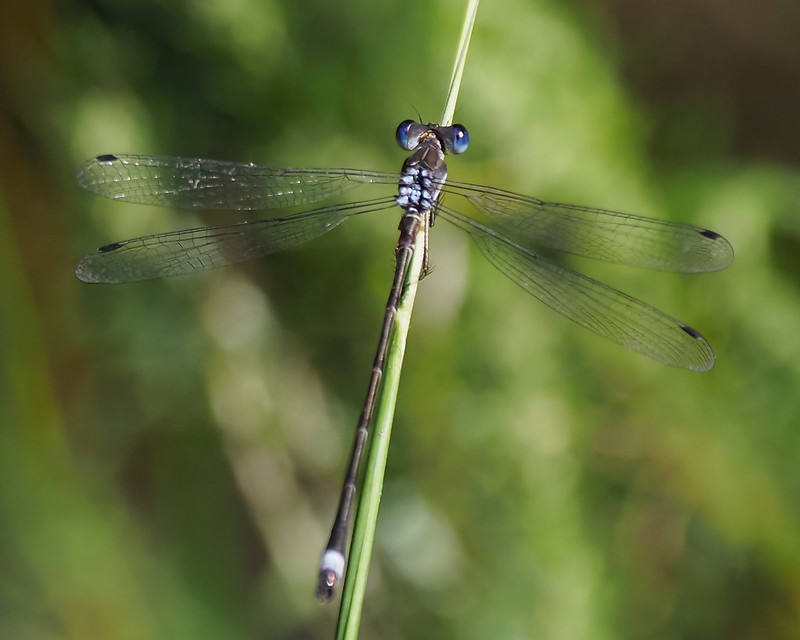
Blue-faced Meadowhawk on Oct 16
The second new Odonate I found on Oct 16 was a dragonfly. Just before I spotted the spreadwing, a small dragonfly with a blue head and red-and-black abdomen briefly hovered in front of me then disappeared. Wow, what was that!? Then I spotted and photographed the spreadwing, hoping the dragonfly was still around. Luckily it was, and I got several photos of my first Blue-faced Meadowhawk.

These photos can also be viewed on Flickr here.















